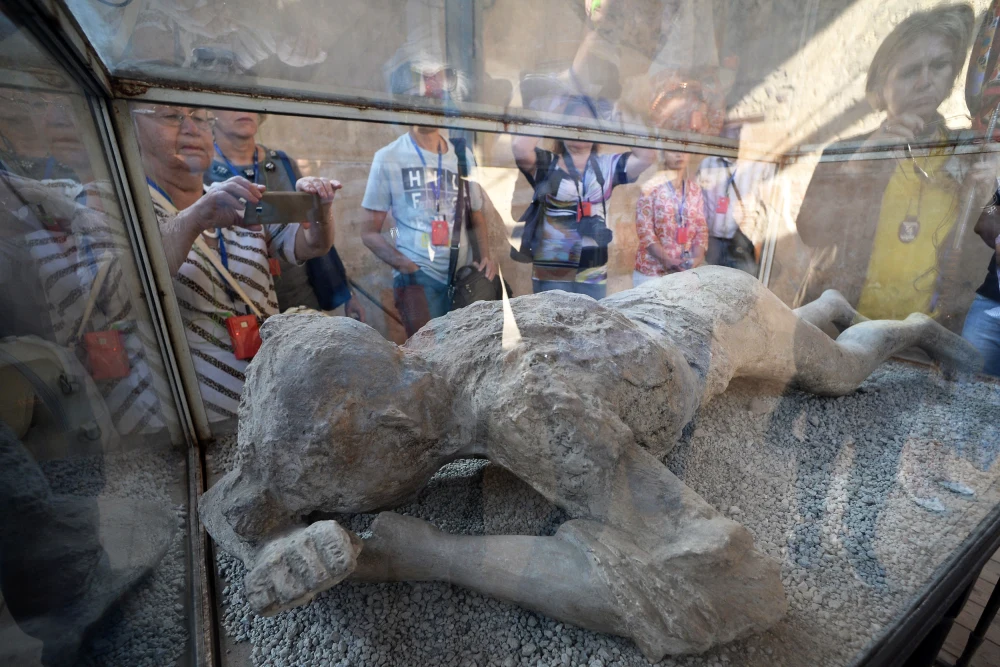“The genetic results encourage reflection on the dangers of making up stories about gender and family relationships in past societies based on present-day expectations,” one of the study’s authors said.

Centuries on and it turns out that long-held assumptions about some of the people of Pompeii should not have been set in stone.
New DNA analysis of skeletal remains in the doomed Roman town has revealed that some of the victims of Mount Vesuvius’s eruption in A.D. 79 have been wrongly identified, highlighting how much modern day thinking has been projected onto the ancient world.
“We show that the individuals’ sexes and family relationships do not match traditional interpretations,” wrote the authors of the research published Thursday in the journal Current Biology. “Modern assumptions about gendered behaviors may not be reliable lenses through which to view data from the past,” they added.
Pompeii’s victims were later immortalized by archaeologists who used plaster to fill the voids left by their bodies and observers have long created stories based on these casts, one of which was long assumed to be a mother holding a child and two women embracing as they died.
But the DNA analysis has shown the person thought to be the mother was actually a man who was unrelated to the child, according to the new research.
And at least one of the people locked in the embrace long assumed to be sisters or a mother and daughter was a man.
“The genetic results encourage reflection on the dangers of making up stories about gender and family relationships in past societies based on present-day expectations,” one of the study’s authors, professor David Reich, said in interview Thursday with the Harvard Medical School, where he lectures.
Researchers from Italy’s University of Florence and the Max Planck Institute for Evolutionary Anthropology in the German city of Leipzig also took part in the study, which examined 14 casts undergoing restoration in a bid determine the victims’ sex, ancestry and genetic relationships using genetic material preserved for almost 2,000 years.
Their findings also revealed that residents of the seaside resort favored by wealthy Romans had diverse backgrounds, primarily tracing their ancestry to eastern Mediterranean immigrants, highlighting the mobility of people and the multicultural nature of the Roman Empire.
Before the eruption, which lasted for more than 24 hours and had the power of thousands of nuclear bombs, Mount Vesuvius had been mostly dormant for centuries.
An estimated 20,000 people lived in Pompeii at the time and many were consumed by a wave of ash, pumice and mud, freezing them in place beneath a fresh layer of volcanic sediment.
Over the centuries, Pompeii and the dead were forgotten, remaining buried for almost two millennia until a farmer found part of the city beneath a vineyard in 1748.
In the 19th century, archaeologists pioneered the technique of pouring plaster into voids left by decomposed bodies, creating lifelike casts.
Since then, more than 100 of these casts have been produced, capturing the victims’ forms along with any surviving bones preserved through the centuries, according to the Archaeological Park of Pompeii.
Research at Pompeii continues to reveal new details about the ancient city and its people, with fresh discoveries made all the time.
Earlier this year, three researchers were awarded a $700,000 prize for employing artificial intelligence to decipher a 2,000-year-old scroll that had been charred in the eruption.



